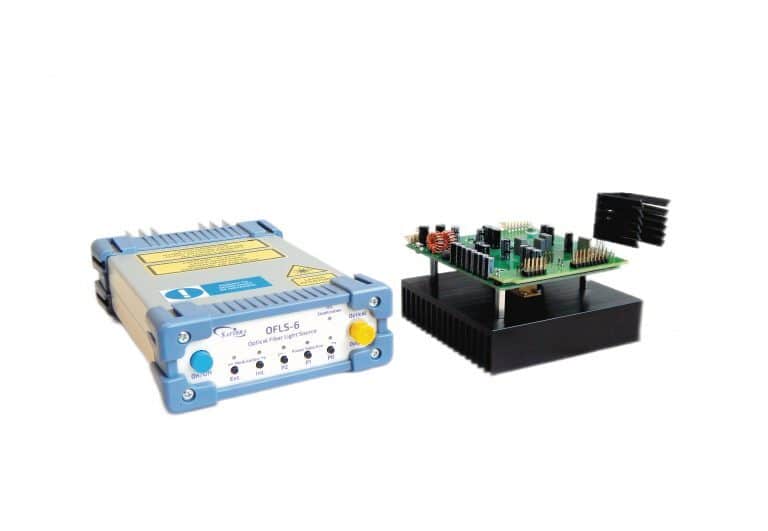- Datasheets
-
OFLS-B – Datasheet(pdf, 433 KB)
Broadband optical fiber light source OFLS-B
Platform for broadband diodes
The OFLS-B series deploys the standard universal OFLS driving platform for broadband fiber optic light sources. It is based on super luminescent light emitting diodes (SLD or SLED) within the different wavelength ranges covering visible (VIS) and near infrared regions (NIR) with different output powers and bandwidths coming from single mode optical fiber.
- spectral range from 400 to 1700 nm
- high output powers up to 30+ mW
- large bandwidths (3 nm – 20 nm in VIS, 20 nm – 160 nm in NIR)
Spectral range
The light emitted by the SLED modules is distributed over a wide spectral range from 400 nm up to 1700 nm.
High output power
The optical powers at the output from the single mode fiber are typically from a few mW up to 30+ mW, depending on the SLD.
Large bandwidth
The typical bandwidths are between 3 nm and 20 nm in the VIS region and between 20 nm and 160 nm in the NIR region.
Fiber output
The device output is characterized by the single mode optical fiber, terminated by FC/APC connector. Either standard SMF is used for the 1230-1700 nm range or special small diameter SMF for the 400-1200 nm range.
Spectral ripple
The variation in the spectral power density is extremely small even at the highest power levels.
Superior performance
Theptical light source exhibits very high stability and superior performance in varied environments and over a long time.
Low coherence length
The SLED modules exhibit low coherence length which is typically in the µm range demanded in medical imaging applications, such as OCT.
Optional features
The light sources can be fitted with optional components for output isolation, depolarization, and many others
Diode packages
The laser sources use different diodes in different packagings, such as BTF, DIL, H8, TOSA, and many others.


